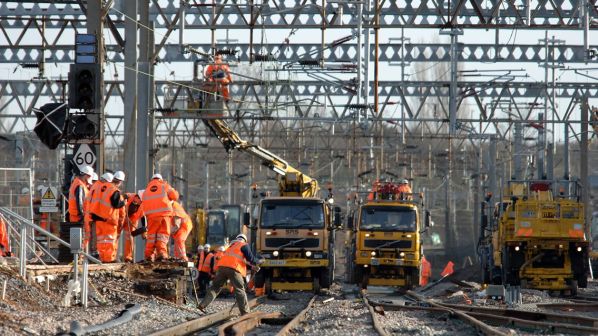Atkins, a SNC-Lavalin company, will use digital image correlation (DIC) technology to analyse the relationship between the type of overhead electrification and pantographs used, and train speeds and contact wire uplift.
DIC is a measurement technique where photographs are taken in rapid sequence, and used to track and record the motion of a deforming solid, such as a moving overhead cable.
Measurements and data collection will be carried out by the Atkins DIC team, which specialises in non-contact measurements in a live rail environment, and which can measure structural deflections to an accuracy of 0.05mm. Atkins will then develop rules to enable smaller uplifts to be used in future schemes.
The new rules are intended to allow for significant reductions in required cable uplift, and will be used by NR on future electrification projects to reduce or potentially eliminate the need for costly infrastructure changes such as bridge reconstruction and track lowering.
Currently, bridge constructions to create a sufficient loading gauge for electrification can cost up to £1m, and typically account for around a third of the overall cost of British electrification schemes. However, electrification of main lines is a necessity if Britain is to meet its Net Zero 2050 decarbonisation targets.
“We’re proud to be supporting NR reduce electrification costs and support the industry’s climate and environmental targets,” says Ms Malabika Das, project manager for strategic rail at Atkins.
“These rules of design should, where technically achievable, cover as many types of NR overhead electrification as is reasonably practicable, be based on robust and documented evidence and strike a balance between conservatism and complexity.”

